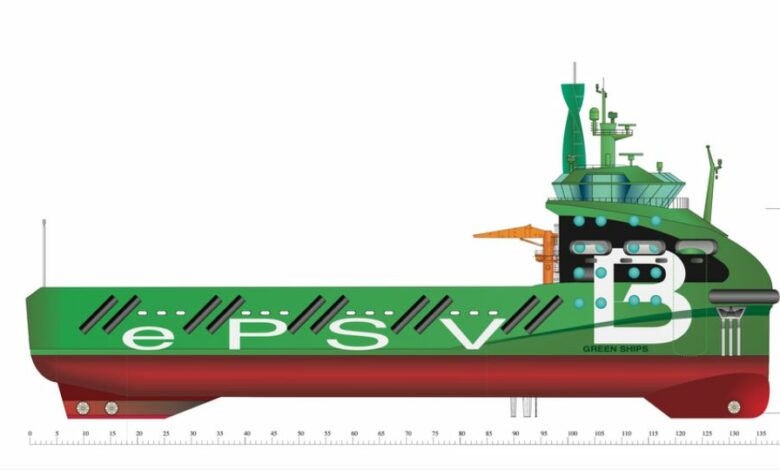Bourbon and Horizon Maritime JV lines up PSV newbuilds for Amogy’s zero-emission solution

Bourbon Horizon, a joint venture between French offshore vessel player Bourbon and its Canadian counterpart Horizon Maritime, has partnered with US-based startup Amogy and Norwegian ship design consultancy Green Ships to install ammonia-to-power systems on newbuild platform supply vessels.
Green Ships Invest has set out to build a new generation of environmentally friendly PSVs with Bourbon Horizon, former Bourbon Offshore Norway, as their commercial and technical manager. A memorandum of understanding with Amogy will see its powerpacks installed on two ships as the primary power source, with an option for a third PSV.
For smaller ships, such as a typical PSV size, liquid ammonia is mainly considered in combination with fuel cells and large batteries. The Amogy powerpack includes a cracking technology that converts liquid ammonia to hydrogen gas for direct integration into the fuel cells, enabling zero-emissions operations.
The so-called ePSV is an 82-m-long unit designed to be a cost-efficient modular ship, with low steel weight, reduced power plant, a smaller but highly effective thruster system, fewer main components and optional modes of conversions in mind, if desired, during its intended minimum 30-year lifetime, Green Ships said.
“This project will be the first of its kind for zero-emission ePSV. We rely on public and private funding to secure the success of this project, and take great pride in cooperating with one of Norway’s leading offshore shipyards, said Per Kavli, CEO of Green Ships.
Today´s global PSV fleet is primarily between 10 and 20 years old and does not comply with the emerging industry emission requirements. Compared to larger, more powerful offshore ships, Green Ships said the ePSV will offer “excellent DP performance and operability” due to the Voith main propulsion system. Fitted with 2 x 1.850 kW main thrusters, a built-in active roll reduction system the well-submerged thrusters will avoid suction of air into the five thrusters, the company explained.
“The successful scaling of zero-emission technology and innovative ship design is crucial for reaching the regulatory requirements of the maritime sector. With stricter IMO regulations to reduce the use of fossil fuels as of 2030, and a target of reducing at least 50% CO2 emissions by 2050, there is an urgency in the industry to adopt decarbonizing solutions,” noted Bjørn Remøy, managing director at Bourbon Horizon.
“The technology to convert ammonia into a zero-emissions fuel is ready. Combined with the announced increased capacity in low- and zero-carbon ammonia and ammonia bunkering projects in Norway, Singapore, and the USA, the maritime industry can take concrete steps to reach the IMO goals, added Christian Berg, managing director at Amogy Norway.
